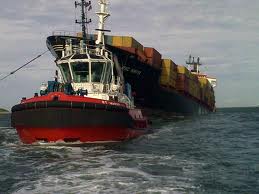
When we think about piracy and maritime security, we often imagine large cargo ships or oil tankers being help hostage for huge ransoms. Indeed, those stories often garner the most attention from national and international media. But much of the focus from within the maritime security has recently shifted to controlling the movements of the far more numerous small vessels.
Internationally, 45,000 small vessels move nearly five hundred gross tons of material in trade, while the United States has nearly 20 million of these boats trolling its national waterways. While big ships might mean big scores and big smuggling operations, the smaller boats are often very attractive targets to many varieties of criminals, simply because they’re so hard to keep track of.
In an effort to come up with a generally applicable security strategy for controlling small vessels, a conference was recently held at the Homeland Security Studies and Analysis Institute in Arlington, Virginia. The conference was hosted by the U.S. Coastguard and U.S. Customs and Border Protection. Attendees included local, state, federal and private sector interests. The result of their meetings and discussion is the Department of Homeland Security Small Vessel Security Strategy Implementation Plan.
Because small vessels are so numerous, their management is extraordinarily decentralized. This is a primary point that the plan addresses, because cohesive security efforts must be coordinated uniformly across organizations in order to be effective. Communication and information sharing are key to maintaining domain awareness. This is primarily accomplished by making use of new technology, such as the Nationwide AIS system, which is in testing now.
Even though piracy isn’t a problem in the local waters of the United States, there are plenty of other threats small vessels face. The most common would be from drug or other illicit item smugglers, and the most grave would be from terrorists looking to do serious damage to U.S. civilians or infrastructure.
The Small Vessel Security Strategy Implementation Plan outlines the necessary steps to prevent such situations from occurring, and the required steps to mitigate any kind of security situation in action. The plan lays out a plan for existing agencies and stakeholders to coordinate in their efforts to keep U.S. shores safe. It also includes suggestions for new research and development, including efforts that will help the overall strategy the plan lays out.
Coast Guard Rear Admiral Paul Zukunft, who serves as Assistant Commander for Marine Safety, Security and Stewardship shared his thoughts on the plan: “Approximately 17 million small vessels use our nation’s waters for a wide variety of purposes, providing extraordinary economic and social benefits.”
“We have consulted closely with our federal, local and private sector partners throughout the nation to ensure that this security strategy is effective while preserving freedom of movement for the small vessel fleet.”
Others, such as Thomas Winkowski, an Assistant Commissioner for Customs and Border Protection Field Operations also shared their praise for the plan: “The Small Vessel Security Implementation Plan is an essential part of national resilience. This plan will provide government and private sector stakeholders with the guidance necessary to fully implement the Small Vessel Security Strategy and further protect our nation from terrorism and other threats.”
While other countries may face slightly different issues regarding their small vessels (piracy being the leading one), this Small Vessel Security Strategy Implementation Plan will of no doubt be useful to the international community, if only as an example of an initial step in addressing the difficult problem of monitoring the many small vessels that travel the waters of the world.
The Small Vessel Security Strategy Implementation Plan may be viewed at http://1.usa.gov/dSxOTB